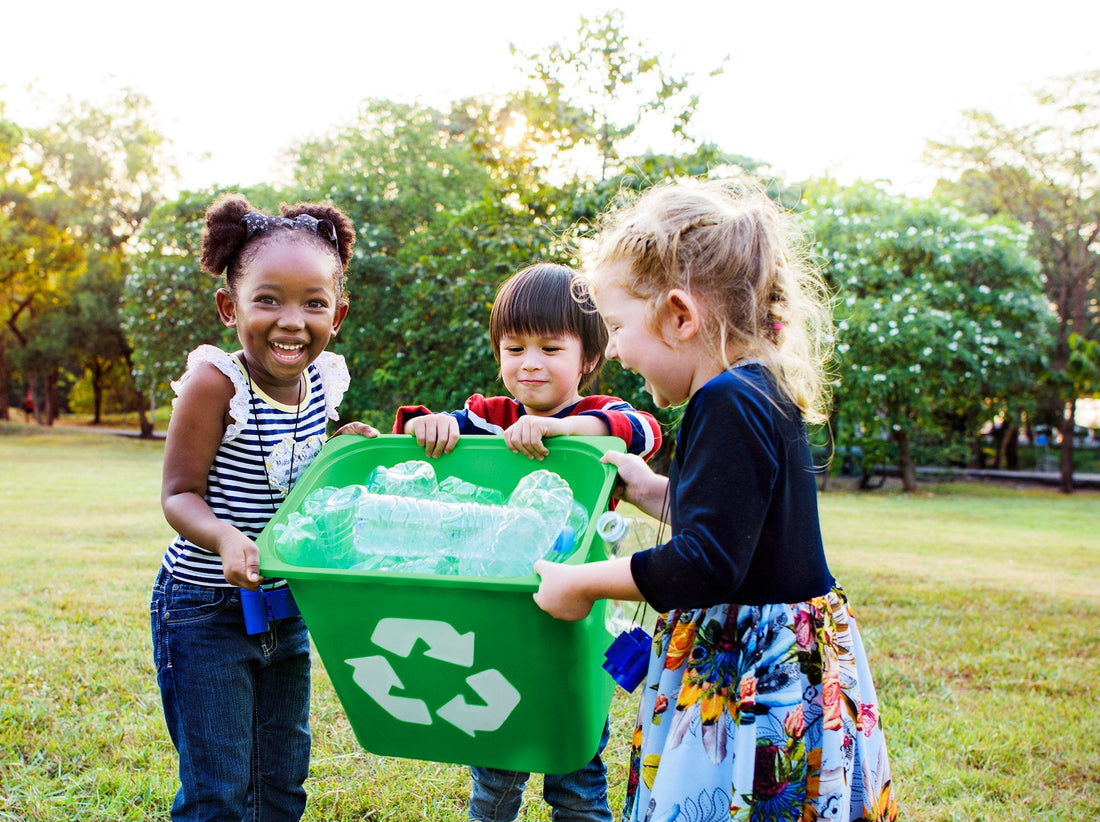
Plastic Toy Alternatives: The Surprising Facts
It’s funny to me that things that were “perfectly fine” when I was a young kid aren’t so much anymore. Probably like you, toys made of plastic filled my childhood. But today there’s a big movement against plastic for several reasons. For me, the data is in, and it is overwhelming: Plastic’s not safe for children to play with, and it’s bad for the environment. While avoiding plastic completely is nearly impossible, learning the consequences of it certainly inspires me to cut as much of it out of our daily lives as possible.
There currently is no comprehensive monitoring of the safety of toys sold. The Consumer Product Safety Commission (CPSC), which tests and certifies products for children 12 and under, monitors basic dangers such as sharp edges and choking hazards, but toys are not tested for safety issues such as flammability, lead, or soluble-heavy elements before they are put on store shelves. The CPSC works in a reactive way, so while toys are recalled when complaints are filed, the dangers have already been released to the public. That the toxicity of any given toy goes completely unchecked was disconcerting to me as I’m sure it is for you.
Green Child Magazine, a publication dedicated to natural parenting, created a summary on the dangers of plastic, noting that the dangers of plastic in toys comes from the combination of the chemicals found in them. And PVC plastic, which is found in almost all plastic toys, is the most toxic.
Now for the second point: our increasingly fragile environment. There’s an excellent article on emagazine.com about this, and the first thing they note is something instantly relatable to me: Today’s parents had to learn to pay attention to environmental issues and adapt previous behavior to new, better ones. Now we’re all thinking about the environment and aware of the damage being done to the planet. As for our kids, thankfully they are being raised to be sensitive to eco-issues primarily because we parents are modeling eco-friendly behavior: we’re recycling, we’re buying sustainably sourced food, we’re using biodegradable cleaning products, and “children tend to emulate these purchasing decisions as adults.” Also in this article was something that really gave me pause:
Being an environmentally conscious consumer is about more than what you purchase; it’s who you purchase from. The evolution of sustainability from government initiatives to social change and corporate leaders making sustainable products has been happening for decades. However, many companies still operate without the environment in mind. Teaching your children about researching their purchases and giving their money to companies that value environmental issues will help them to continue that practice as they get older.
So, purchasing from multinational corporations whose priority is profit sends a different message than purchasing from smaller, more compassionate companies.
Alternatives to Plastics
Well, now we at Playper are taking the paper toy a step further: our premium cardstock toys are sturdy enough for a toddler to toss around. They’re 100% recyclable, safe, and perhaps most important, spark imaginative hands-on play at a time when we are noticing that there are increasingly fewer opportunities for that. What encourages the creative child is Playper’s emphasis on simplicity: while these toys are brimming with personality, they are easy to put together – and there are few things more rewarding for us parents than watching our kids put together something with their own hands. (Bonus: Playper products are a great excuse for us to get on the floor and assemble the toys with our kid!) I believe that knowing that these paper characters, props, and buildings are easy to recycle makes receiving new ones every month completely guilt-free.
Modeling for a Healthier Planet
Now this is something you for sure already know: we parents are the most important role model in our child’s life. What we buy and from which company matters. Choosing paper or other eco-friendly toys, games, and crafts makes a statement our children will internalize. In fact, I hear from fellow parents that from an early age their kids start asking them questions of us about their choices in relation to sustainability and conservation – I know mine do! I’m constantly being told that I need to “step up my game” on being eco-sensitive. I know I’m not alone in thinking this: I want to do all I can to make sure my children’s children inherit a clean, healthy planet.
Like what we’re doing? Sign up for articles, info, great deals and free downloads!
